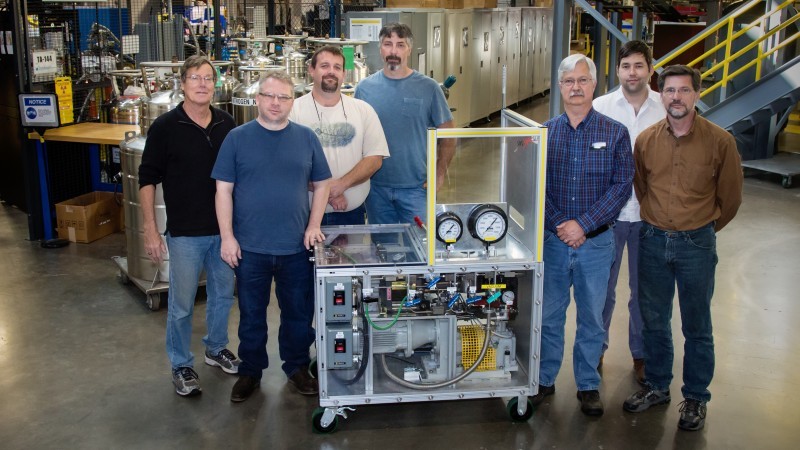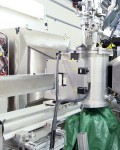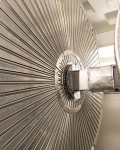A recently developed hydrogen-rated gas intensifier will soon provide a new way to load diamond anvil cells at the Spallation Neutron Source (SNS).
The hydrogen-rated gas intensifier is a result of a Laboratory Directed Research and Development (LDRD) project with the VISION spectrometer, SNS beam line 16B, that will also be used in collaboration with the SNAP diffractometer, SNS beam line 3. The new tool for high pressure researchers will enable measurements under quasi-hydrostatic conditions at pressures above 11 GPa, the hydrostatic limit of conventional liquid media.
A diamond anvil cell containing a pre-loaded sample is installed in the intensifier, pressurized up to 2.7 kbar with room temperature gas, and then sealed via a mechanical feedthrough trapping a miniscule amount of the high-pressure gas inside the cell’s sample chamber. Because only a small quantity of a large volume of gas is loaded in the cell, the intensifier is equipped with a recovery and recycling system to reclaim unused rarified and expensive gases before the cell is removed for study at the beam lines.
“The 3 kbar gas intensifier will enable us to perform diamond anvil cell experiments under hydrostatic conditions by mixing a solid sample material with a high pressure gas medium,” said SNAP Scientific Associate Jamie Molaison. “Pressurizing under hydrostatic conditions reduces the pressure gradient across the sample chamber, thereby minimizing strain on the sample and pressure-induced of Bragg peaks.”
Additionally, the hydrogen-rated gas intensifier will offer an opportunity to study condensed gases and their mixtures, such as: hydrogen, methane, carbon dioxide and xenon.
Team members involved in the development of the hydrogen-rated gas intensifier are Mark Loguillo, Doug Armitage, Matt Rucker, Reinhard Boehler, Chris Tulk, Mark Overbay and Jamie Molaison.
The SNAP team has already received proposals for use of the intensifier.
SNS is a Department of Energy Office of Science User Facility. UT-Battelle manages ORNL for the DOE’s Office of Science. The Office of Science is the single largest supporter of basic research in the physical sciences in the United States, and is working to address some of the most pressing challenges of our time. For more information, please visit http://science.energy.gov/. —Lauren Smith








